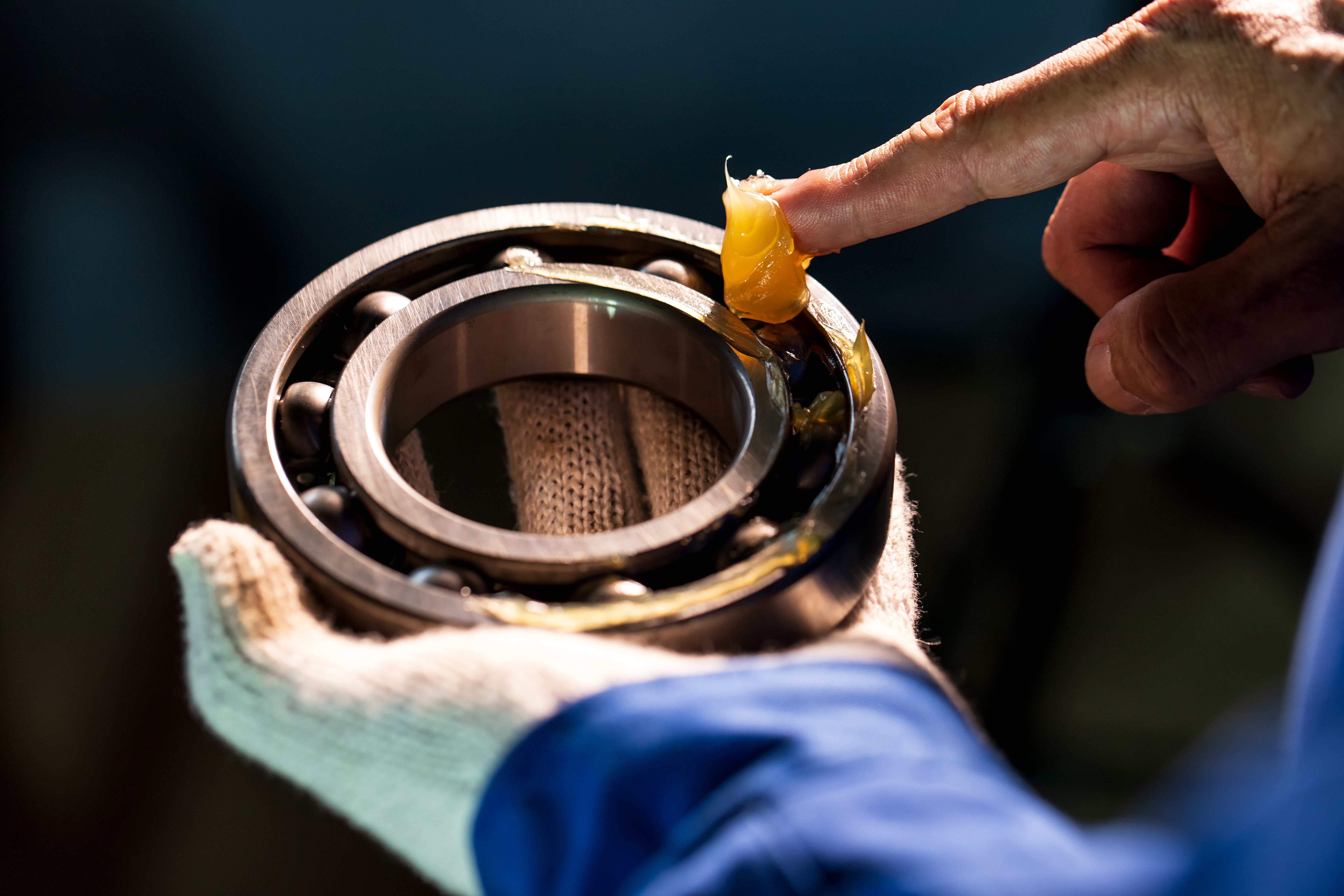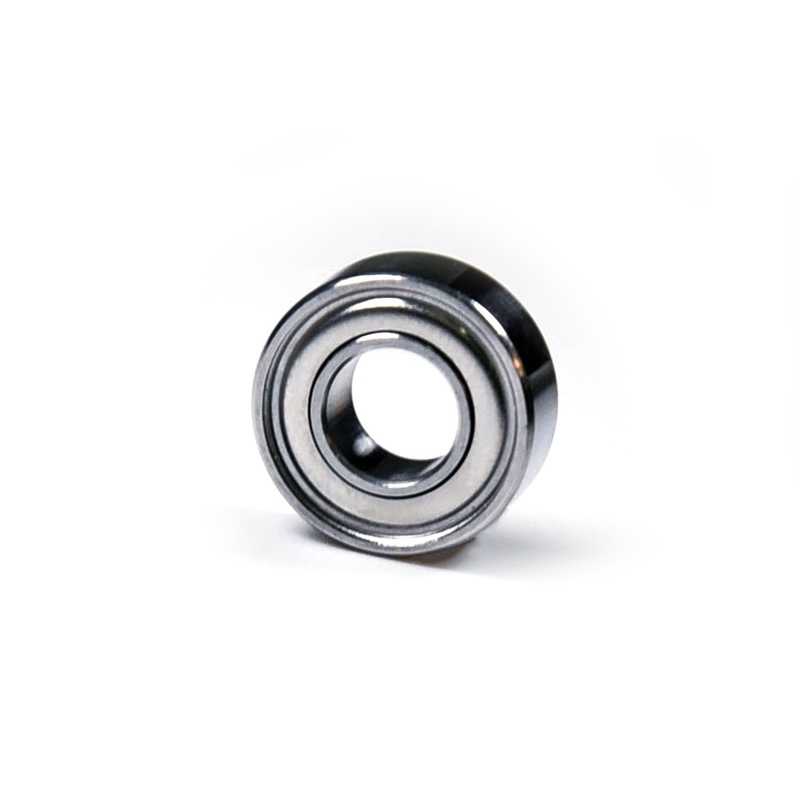Need Support?
Please provide your question. We’ll find you with the best support options.
Table of content
In the dynamic realm of engineering, where precision and efficiency are paramount, ceramic bearings have emerged as a revolutionary component, pushing the boundaries of what traditional steel bearings can achieve. This article explores the key attributes and benefits of ceramic bearings, shedding light on why they have become increasingly popular in various industries.
1. Full Ceramic Bearings
These bearings use ceramic materials for the inner ring, outer ring, and rolling elements.
Common ceramic materials include silicon nitride (Si₃N₄) and zirconia (ZrO₂).
They are used in environments where non-metallic components, low friction, or corrosion resistance are important.
2. Hybrid Ceramic Bearings
Hybrid bearings use ceramic balls with steel rings.
This design reduces rolling weight while keeping the strength of steel rings, making them suitable for high-speed or continuous-running systems.
Unveiling the Advantages of Hybrid Ceramic Bearings 
Ceramic bearings are made from special ceramic materials. These materials are usually silicon nitride (Si3N4) or zirconia (ZrO2). These materials are very hard, resist corrosion well, and have low thermal expansion. This makes them great for uses where regular steel bearings might not work well.
Ceramic bearing offer advantages such as high durability. However, their higher cost is a notable drawback. Choosing between ceramic and steel bearings depends on your budget, what you need them for, and how much weight you want to save. In situations where durability and weight savings are more important than cost, ceramic bearings can be a better option.
High Cost: The cost of manufacturing ceramic bearings is significantly higher than that of traditional steel bearings. This means a larger initial investment, particularly in applications that require a large number of bearings.
Brittleness: Although ceramic materials are very hard, they are also more brittle and have lower tolerance for impacts and vibrations. This can be an issue in high-load or unstable environments.
Specific Application Range: Not all applications require the high performance of ceramic bearings. For instance, in low-speed or medium-speed machinery, steel bearings are already sufficiently reliable and cost-effective.
Ceramic bearing are valued for their hardness, low friction, and corrosion resistance, making them ideal for applications like high-performance bicycles, skateboards, and industrial machinery.
However, materials like silicon nitride or zirconia, while durable, are more brittle than steel. This means they can crack or shatter under extreme stress or impact.
Factors that can contribute to ceramic bearing cracking include:
Ceramic bearings are capable of functioning efficiently under dry or minimal lubrication conditions. Their high hardness and exceptional wear resistance allow them to perform well without traditional grease. In some cases, they are even promoted as "maintenance-free" or "self-lubricating," thanks to the inherent properties of ceramic materials.

Grease is not necessarily unsuitable for ceramic bearings, but there are situations where it may not be the best choice:
Dust Accumulation: Grease can attract and trap dust and contaminants, which may increase friction and wear. In dusty environments, dry or minimal lubrication methods might be more suitable.
 The optimal lubrication strategy depends on the application's specific needs. Always refer to manufacturer guidelines to ensure ceramic bearings deliver long-lasting and efficient performance.
The optimal lubrication strategy depends on the application's specific needs. Always refer to manufacturer guidelines to ensure ceramic bearings deliver long-lasting and efficient performance.
A bearing's lifespan depends on factors like its application, operating conditions, and maintenance. Generally, ceramic bearings last longer than traditional steel bearings due to their high hardness and excellent wear resistance, making them ideal for applications requiring extended durability.
Ceramic Bearing Specifications: Overview of Materials and Characteristics 
Based on general considerations and properties, here's a rough ranking of bearing materials from potentially longer to shorter lifespan:
Ceramic bearings, especially those made from materials like silicon nitride, often have a longer lifespan than traditional steel bearings. Ceramics offer excellent hardness, corrosion resistance, and resistance to wear.
 Extended reading: Ceramic Bearings: Advantages and Applications in Precision Engineering
Extended reading: Ceramic Bearings: Advantages and Applications in Precision Engineering

High-quality steel alloys, such as chrome steel, are known for their durability and wear resistance, providing a relatively long lifespan.
Bronze alloys, like phosphor bronze, are commonly used in bushing bearings and can offer a moderate lifespan, depending on factors like load and lubrication.
Plastic bearings, made from materials like PTFE or acetal, typically have a shorter lifespan than steel, ceramic, or bronze bearings. However, their low friction and self-lubricating properties make them ideal for low-load, low-speed applications.
 Please note that this order is a generalization, and actual performance can vary based on specific conditions and applications. It's always advisable to consult with bearing manufacturers or engineers for precise recommendations based on the intended use.
Please note that this order is a generalization, and actual performance can vary based on specific conditions and applications. It's always advisable to consult with bearing manufacturers or engineers for precise recommendations based on the intended use.

The choice between ceramic and steel bearings depends on the specific needs of the application and operating conditions. Both materials have their own advantages and disadvantages.
 Extended reading: Ceramic Bearings vs. Chrome Steel Bearings: Choosing the Path to Optimal Riding Experience for Your E-Bike
Extended reading: Ceramic Bearings vs. Chrome Steel Bearings: Choosing the Path to Optimal Riding Experience for Your E-Bike
 Here are some factors to consider:
Here are some factors to consider:
In conclusion, there is no one-size-fits-all answer. The choice between ceramic and steel bearings depends on the specific needs of the application. Ceramic bearings may offer advantages for high-performance or specialized uses, while steel bearings are often more cost-effective for general-purpose applications. To make an informed decision, it's best to consult bearing manufacturers or engineers based on your project's specific requirements.
 Extended reading:
Extended reading:
Sleeve Bearing vs. Bushing Showdown! Unveiling the Ultimate Winner
Ceramic Bearings for RC Cars: Unlocking the Speed Potential
Discover more about the features and applications of various bearings.
Click here to explore more articles and find the perfect bearing for your project.
Needle Bearings (Roller Bearings) are a type of bearing that performs exceptionally well at high speeds. Their rollers are precisely guided by specially shaped, high-rigidity cages with minimal dimensional error. Despite their small cross-section, needle bearings...
How Do Ball Bearings Work? Bearings are often small and unassuming components in a product, yet they are crucial for its proper functioning. Without bearings, many products would fail to operate effectively. But do you know how ball bearings...
Please provide your question. We’ll find you with the best support options.